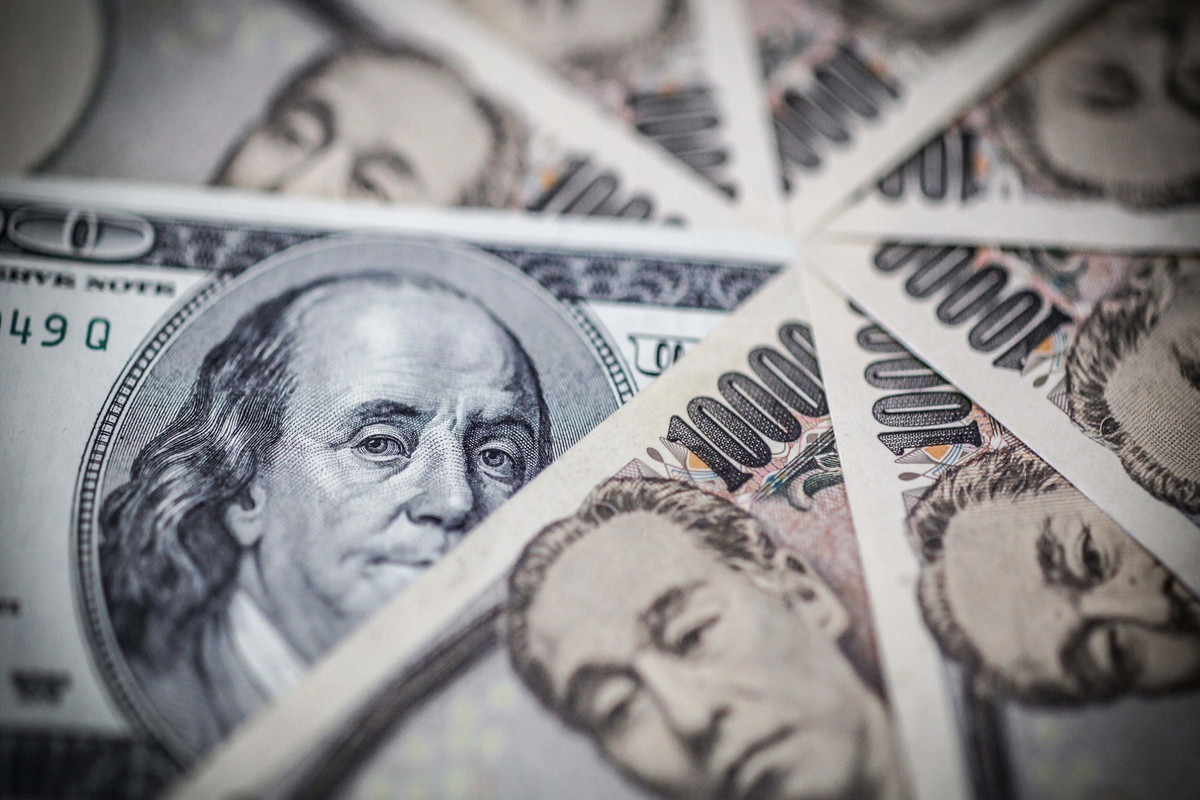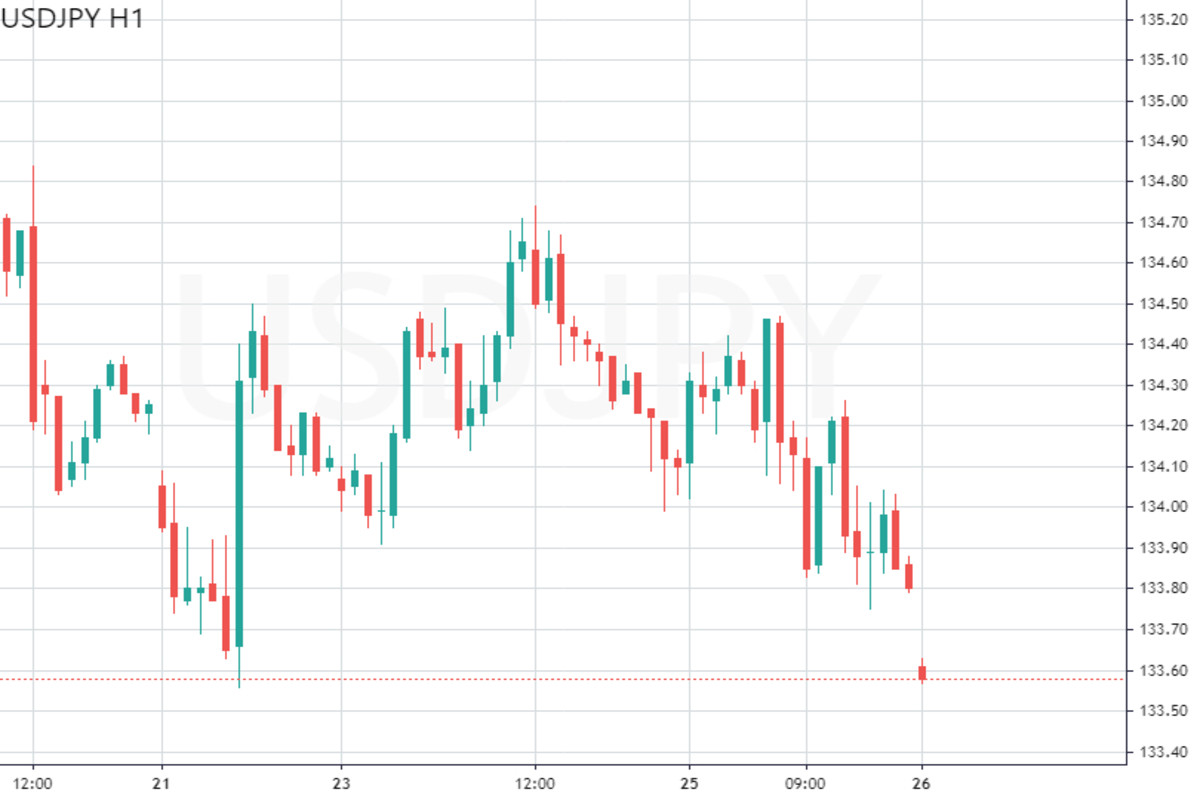
The key trigger for the USD/JPY pair this week will be the Bank of Japan's (BOJ) meeting on monetary policy. Experts believe that regardless of the outcome, the currency pair will demonstrate strong volatility. Let us discuss possible scenarios of the pair's trajectory.
Dollar vs. Yen: Who has the upper hand?
On Tuesday, the US dollar significantly strengthened against a basket of major currencies. The DXY index jumped by almost 0.6% and reached the level of 101.8. The sharp rise in the greenback was driven by a surge in demand for safe-haven assets. The market was gripped by panic over a large-scale banking crisis and a global recession, similar to what happened in the middle of the previous month.
The cause for concern was negative quarterly results reported by banks. At the start of the week, American First Republic Bank reported that its clients withdrew $100 billion from deposits in 3 months, while its Swiss counterpart, UBS, reported a more than 50% decline in quarterly profits.
The news has exposed old wounds. Apparently, depositors stopped trusting banks in the wake of recent shocks, making the financial sector even more vulnerable.
Investors now fear that further deterioration of the situation could lead not only to a global banking crisis but a worldwide recession. This pessimistic scenario forced traders to abandon risk assets in favor of safe-haven currencies, and the US dollar was not the only winner in this situation.
At the end of yesterday's trading session, the yen soared against its American counterpart by 0.5%, testing an intraday high of 133.4.

The Japanese currency rose despite the fact that the day before, the new head of the Bank of Japan, Kazuo Ueda, made it clear that the regulator is in no hurry to change its monetary course.
According to experts, the confident growth of JPY was facilitated not only by the improved appetite for safe-haven assets but also by a sharp drop in the yield of US government bonds. They weakened amid hawkish market expectations regarding the future monetary policy of the Federal Reserve.
Investors are concerned that persistent problems in the US banking sector will not allow the Fed to remain aggressive.
Futures markets currently estimate the probability of a 25-basis-point rate hike in May at only 76%, although at the beginning of the week, traders believed the probability of such a scenario was 90%. In addition, speculation has returned to the market that the US central bank may pause its tightening cycle in June and then switch to a sharp reduction in interest rates.
However, most analysts consider panic over this issue to be overly premature. To understand the actual situation in the US financial sector, more data is needed, and by the end of the week, we will have more information on the issue.
On Friday, April 28, the US regulator will release its internal report on the bankruptcy of Silicon Valley Bank, which occurred in March. According to Michael Barr, Vice Chairman of the Federal Reserve for Supervision, the release will include confidential information that the central bank typically does not disclose to the public, as well as recommendations for future policy.
If this release is more optimistic than the recent First Republic Bank report, it could provide significant support to the US dollar ahead of the Federal Reserve's May meeting on monetary policy scheduled for next week.
Strategists at Wells Fargo doubt that current concerns in the banking sector can deter US policymakers from further rate hikes. They expect a strengthening of hawkish market expectations in the short term and a rise in the US dollar.
Under these circumstances, the USD/JPY pair may show excellent upward momentum by the end of the week, unless the Bank of Japan surprises traders with a hawkish move, which is highly unlikely at this time.
Yen walking on the edge
All eyes of the dollar/yen traders are on the Bank of Japan's (BOJ) monetary policy meeting scheduled for April 27-28. This will be the debut meeting for Kazuo Ueda who succeeded former BOJ Governor Haruhiko Kuroda earlier this month.
So far, the new head of the institution has not expressed any discomfort regarding the dovish strategy he inherited. All comments by Kazuo Ueda indicate that he intends to adhere to the current ultra-accommodative policy, at least in the short term. He reaffirmed this again this morning, stating that the central bank's response to inflation, which stimulates cost increases, would depend on economic conditions.
"The central bank finds it very difficult to combat inflation that leads to rising costs. On one hand, we would like to curb elevated inflationary pressure, but on the other hand, we do not want to tighten monetary policy, knowing that it could cool the economy," said the BOJ chief.
Kazuo Ueda also added that he expects a decline in inflation as import commodity prices have likely already reached their peak. This remark once again underscored the Bank of Japan's position on inflation. Like his predecessor Haruhiko Kuroda, the new BOJ chairman believes that the recent price increase was mainly due to the rising cost of imported goods and is therefore unsustainable.
We also got further evidence that the Bank of Japan (BOJ) remains focused not on combating inflation but on supporting its fragile economy. Kazuo Ueda's rhetoric is not much different from the dovish statements made by his predecessor, Haruhiko Kuroda, leading investors to believe that the central bank will leave its monetary policy unchanged in April.
Most market participants no longer believe that Kazuo Ueda will initiate a policy correction for yield curve control this month even though such a scenario had been actively discussed by investors until recently.
Traders have changed their forecasts following yesterday's statement by the Japanese central bank's chairman. On Tuesday, Kazuo Ueda emphasized that in light of current events, it is advisable to continue monetary easing through yield curve control (YCC), as the Japanese bond yield curve has normalized amid declining global government bond yields.
If the BOJ maintains all its policy tools unchanged following the April meeting and does not announce an official policy revision in the near future, it is likely to deal a severe blow to the yen. Under such circumstances, the USD/JPY pair has a chance to develop truly impressive growth to levels above 134.
However, if Kazuo Ueda suddenly decides to follow the same playbook as his predecessor, Haruhiko Kuroda, who shocked markets with unexpected policy moves throughout his ten-year tenure, we may see the complete opposite scenario for the major currency pair.
Any shift in a hawkish direction (or even a hint of it) from the Bank of Japan will serve as rocket fuel for the yen. According to the most pessimistic forecasts, the USD/JPY pair could fall below the 132 mark.
As we can see, the dollar/yen pair will experience turbulence on Friday, regardless of the decision made by Japanese policymakers. Therefore, we recommend taking all risks into account and preparing for both scenarios: strong growth and a sharp decline.





















